Reflection on the 2020 Multiple Choice Exam
On April 10th, a Exam for Trimester 3 and reviewing for the AP Exam was opened and it was a Multiple Choice Test on CollegeBoard with 67 Questions and this is my reflection as well as any test corrections
Taking the Multiple Choice Test
We were assigned a 50 Question Multiple Choice Test in preparation for the AP Exam and we know what to expect on that day. This was assigned on a Friday, but we had until the next Monday to finish it. Many of my groupmates had started it and I worked with some of them to get maybe the first 15 questions done, but I had to I did this pretty quickly and finished quicker than expected and when I submitted I got a 64/67 (95.5%).
Test Corrections
After I submitted the test, I got 64/67 (95%), and I was surprised that I only got five problems wrong, most of the questions were easy but I did not know how to answer them some of them, especially ones that were about Big Idea 4. I did get an A, but I should also work on improving those other concepts. This means I should work harder towards trying to understand why I got these questions wrong and remember them. Whenever I got questions wrong, they were usually from the same skill showing that I could use some practice in specific skills.

1.A: 0/1 (0.0%)
1.B: 1/1 (100.0%)
1.C: 2/2 (100.0%)
1.D: 12/13 (92.3%)
2.B: 11/11 (100.0%)
3.A: 1/1 (100.0%)
3.B: 4/4 (100.0%)
3.C: 3/4 (75.0%)
4.B: 6/6 (100.0%)
4.C: 4/4 (100.0%)
5.A: 3/3 (100.0%)
5.C: 3/4 (75.0%)
5.D: 1/1 (100.0%)
5.E: 3/4 (75.0%)
I can take a look at the notes I took for each section, especially from the ones I got wrong. If I don’t understand it from my notes, I can always go back to the CollegeBoard Videos and rewatch it. Additionally, when I was doing test corrections I could look at the reason why my answer was wrong, and why the correct answer was right.
Question 4
Topic 3.9: Developing Algorithms
Explanation for Wrong Answer: B, Floating-point numbers are represented differently from integers. The limitations of floating-point numbers typically result in round-off errors, not overflow errors.
Explanation for Correct Answer: C, Overflow errors occur when an arithmetic operation results in a value outside the range of numbers that can be represented by a fixed number of bits.
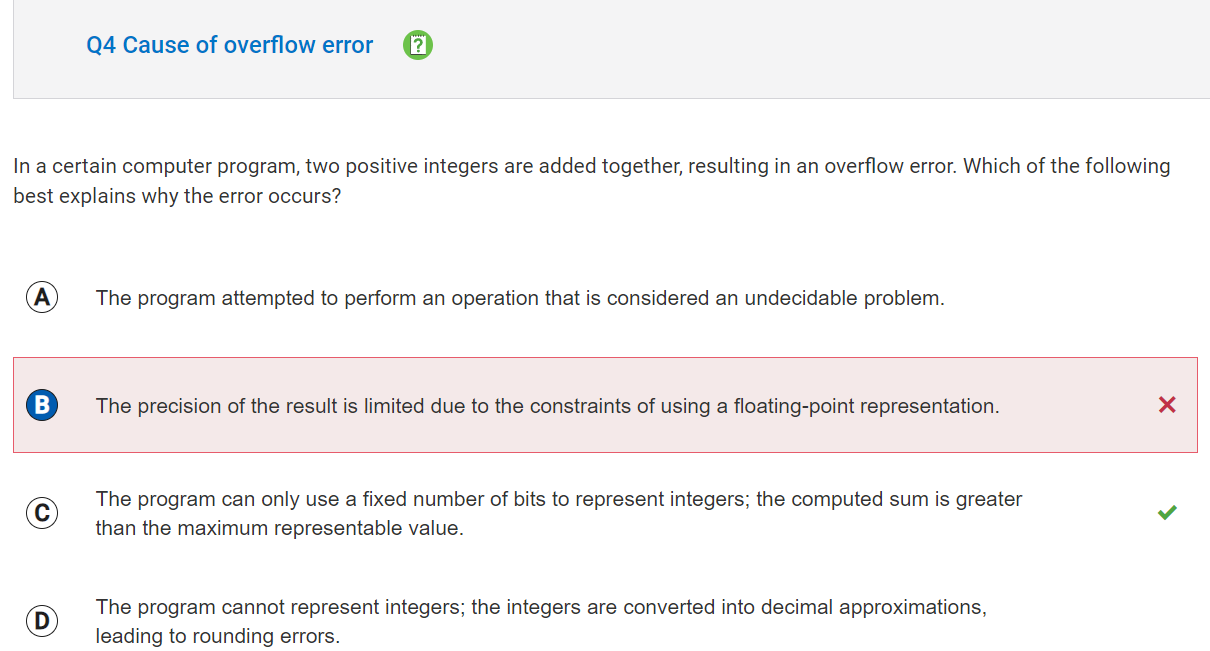
Question 9
Topic 3.18: Undecidable Problems
Explanation for Wrong Answer: D, Private data can be intercepted by an unauthorized individual regardless of whether redundant routing is used.
Explanation for Correct Answer: C, With public-key encryption, any person can encrypt a message using the receiver’s public key, but that encrypted message can be decrypted only with the receiver’s private key. This provides the sender security in knowing that only the intended recipient can access the data.
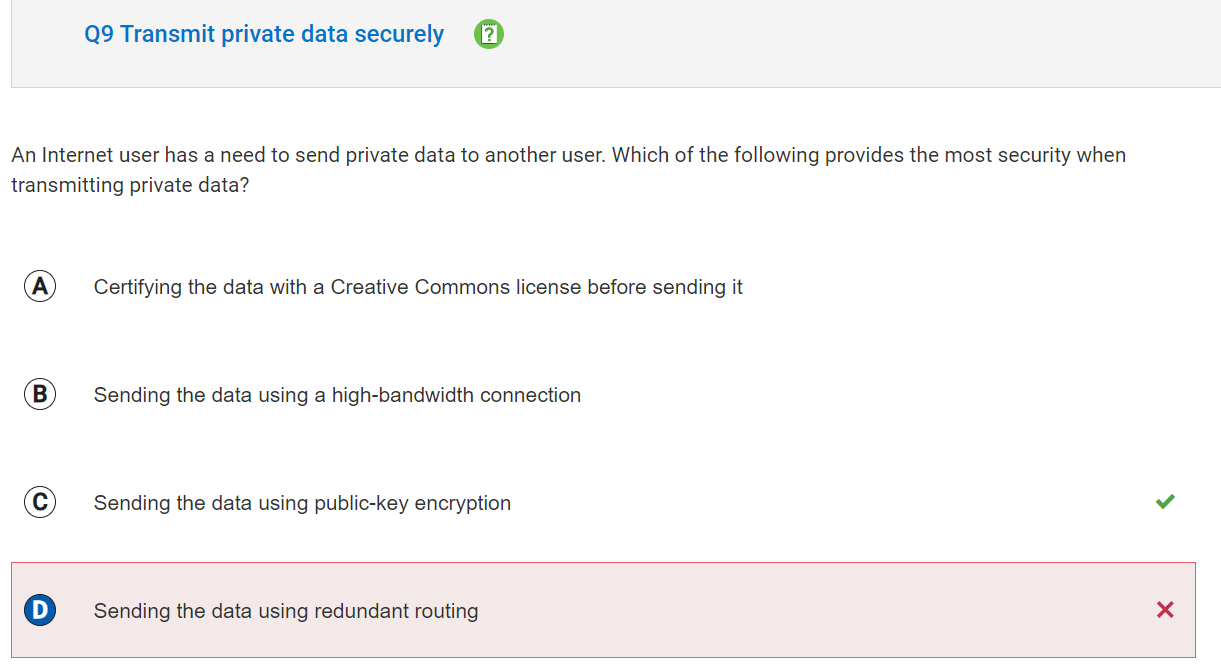
Question 15
Topic 5.6: Safe Computing
Explanation for Wrong Answer: C, With public-key encryption, any person can encrypt a message using the receiver’s public key, but that encrypted message can be decrypted only with the receiver’s private key. This provides the sender security in knowing that only the intended recipient can access the data.
Explanation for Correct Answer: A, Program A initializes i to 1. Inside the loop, it prints i and then increments i. The loop terminates when i is greater than 10, which occurs after 10 is printed. Program A prints 1 2 3 4 5 6 7 8 9 10. Program B initializes i to 0. Inside the loop, it increments i and then prints i. The loop terminates when i equals 10, which occurs after 10 is printed. Program B prints 1 2 3 4 5 6 7 8 9 10.
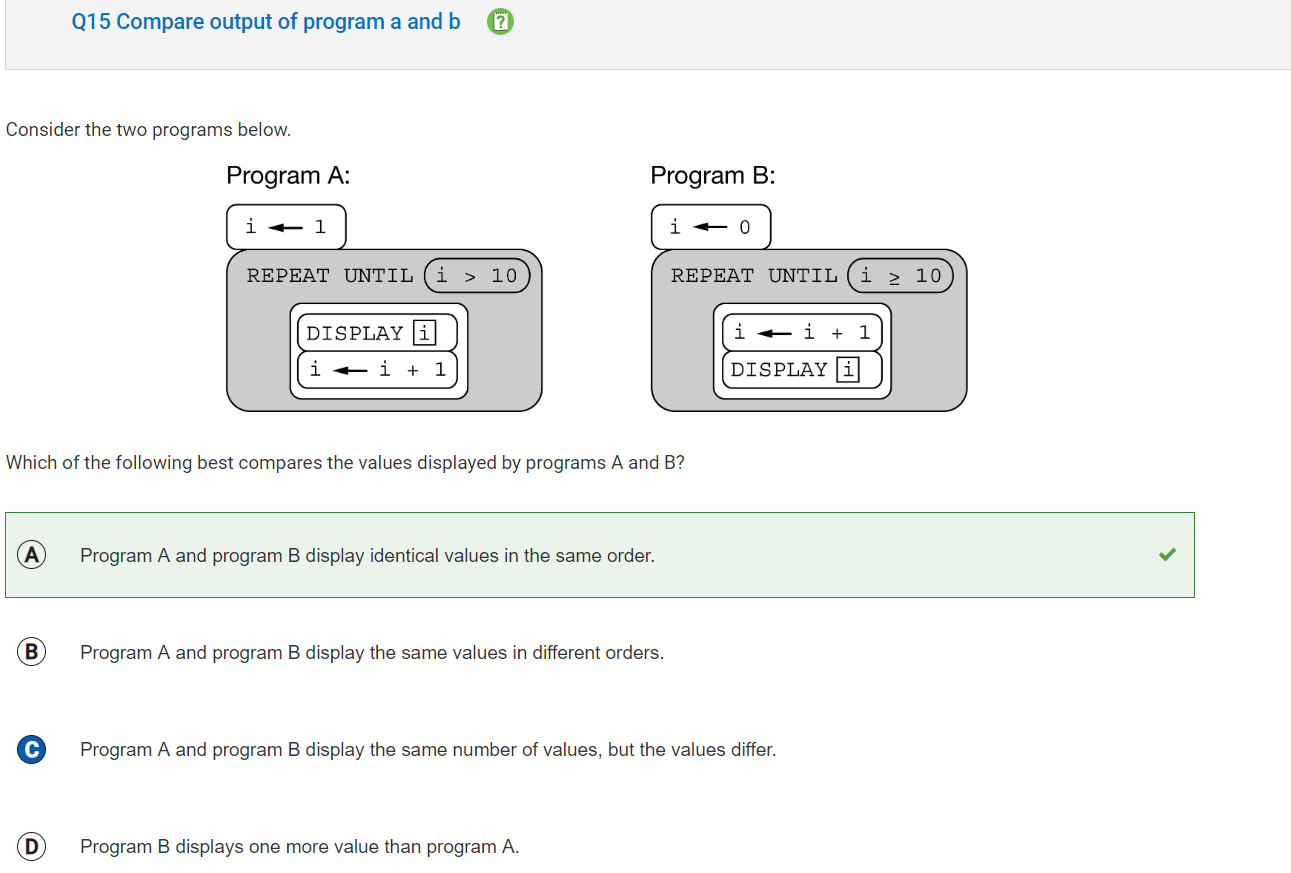
Confusing Problems
Question 2
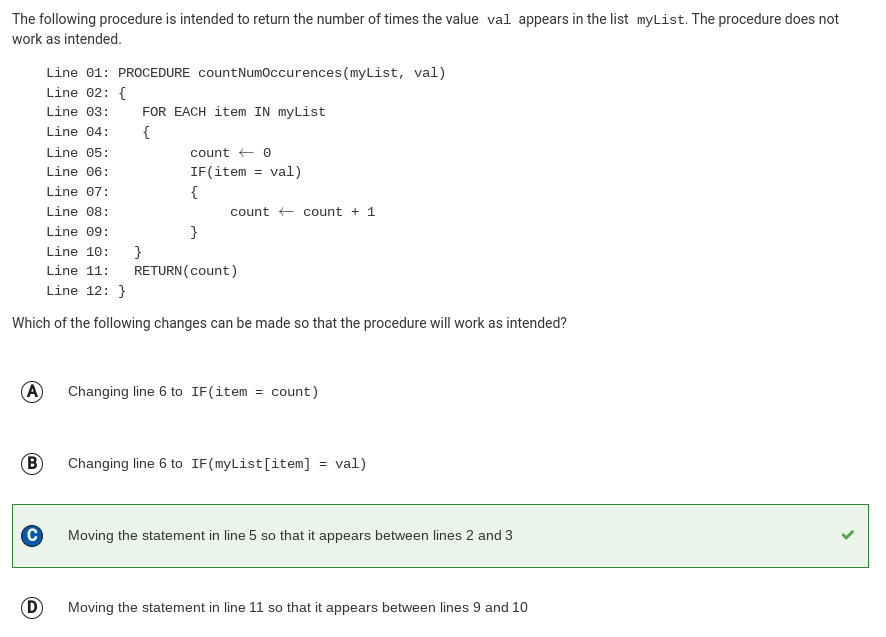
I did not understand the purpose of the program and I had to try and guess what could be changed in order to find out the answer. On this question, I had to guess the answer because I did not know what would make sure the output of the code would stay the same.
Question 16
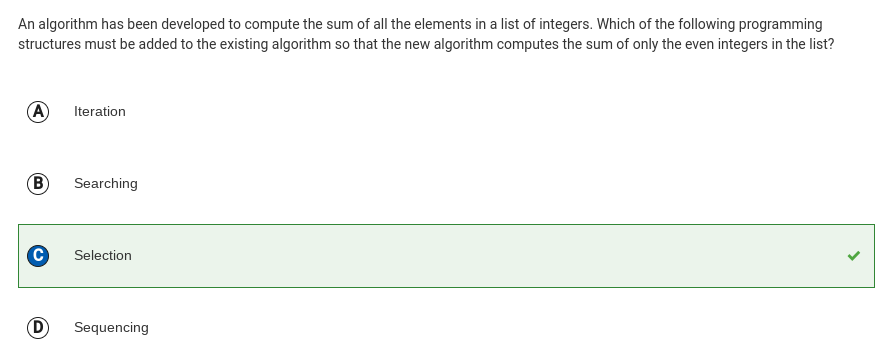
This question was a complete guess because I had no idea what each one meant completely, I had an idea of each one, but I wasn’t sure why the answer was selection, I knew it couldn’t be iteration because that would help with the even number, and I had to guess between the other three choices, and I was right. I still do not understand but maybe I can understand by looking at someone else’s test corrections.
Question 30
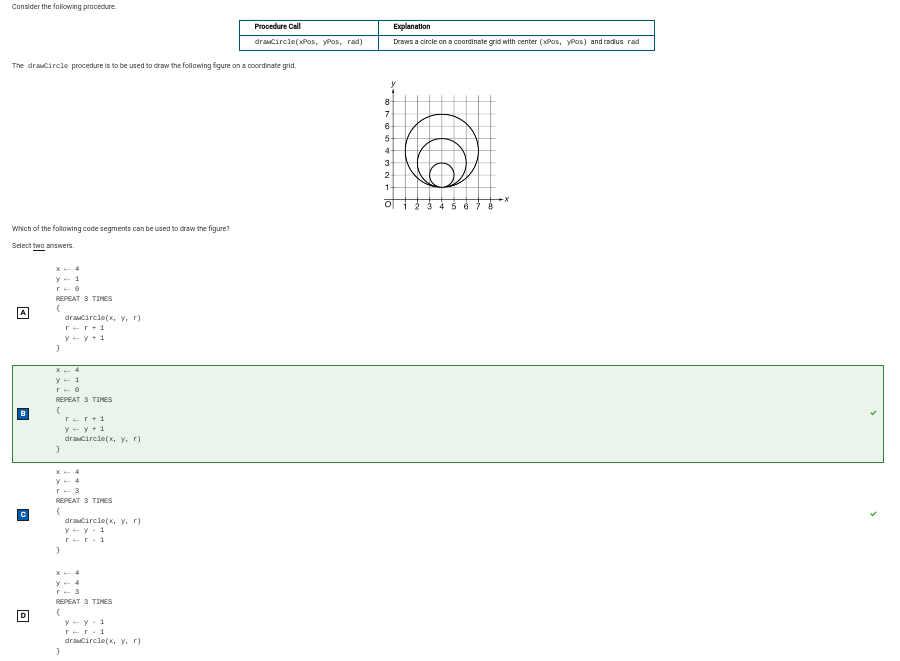
This question was very hard and I did not really understand what the question was asking and I had no idea what I had to do. I got this question right but I did not know why it was B and C, all I knew was that it was not A or D because the circles did not line up.
Reflection on the Exam
Overall, the test was pretty easy and I am happy with ny score, but I should try to get a higher score. If I paid attention a little more, I think I could have understood the questions a bit more I think I went through this test pretty slowly because I did not really understand each question and I had to read it a lot of times. I think I can do well on the AP Exam if I find out what exactly I need to do and keep reviewing the content, spend less time on each problem.